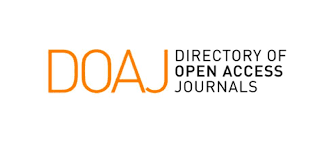Analysis Of Earthquake Potential Energy in The Bali Subduction Zone
Abstract
Research has been carried out to analyze the potential energy of earthquakes in the subduction zone in the Bali region which aims to determine the seismicity index, a-value, b-value, return period and earthquake potential energy in the Bali region at coordinates 114.2º east longitude - 115.9º east longitude and 11 ,7º south latitude – 7.5º south latitude. Earthquake data used in the form of the date and time of the earthquake, earthquake coordinates in the form of latitude and longitude, earthquake depth and magnitude. The research was conducted using secondary data from the USGS (United State Geological Survey) earthquake catalog from 1970 to 2020 with a magnitude of 3-10. The data is modeled using Arc Gis software to obtain a seismicity map. The seismicity index, a-value, b-value, return period and earthquake potential energy were obtained using the least square method. Obtained a-value = 5.3 and b-value = -0.74, a seismicity index of 0.083 and an earthquake return period with a tested magnitude of M0 of 6 Mb of 12 years. The earthquake potential energy for this subduction zone is also obtained at 3,616×1014 J.
Downloads
References
[2] C. Demets, R.G. Gordon, D.F. Argus and S. Stein, Effect of Recent to The Geomagnetics Reversal Time Scale on Estimates of Current Plate Motions, Revisions Geophysical Research Letter, vol. 3, no. 21, 1994, pp. 2191-2194.
[3] T. Gunawan, Analisis Energi Gempabumi Daerah Tasikmalaya dan Sekitarnya. Skripsi. Akademi Meteorologi dan Geofisika, Jakarta, 2010.
[4] T. Gunawan, D. Aldilla, G. M. Taufik, Studi Karakteristik Gempabumi Signifikan Mw > 6.0 Akibat Aktivitas Sistem Busur Belakang Segmen Bali Lombok Menggunakan Analisis Energi Kumulatif dan Periode Ulang, Jurnal Meteorologi dan Geofisika, vol. 21, no. 2, 2020, pp. 29-35.
[5] B. Gutenberg, The Energy Of Earthquakes, The Quarterly Journal Of Geological Society Of London, vol. 112, no.3, 1955, pp. 19-28.
[6] N. Herlina, Tingkat Keaktifan Gempabumi Provinsi Maluku, Skripsi, Akademi Meteorologi dan Geofisika, Jakarta, 2012.
[7] Pusat Studi Gempa Nasional (PUSGEN), Peta Sumber dan Bahaya Gempa Indonesia Tahun 2017: Pusat Penelitian dan Pengembangan Perumahan dan Permukiman, Kementrian PUPR, Bandung, 2017.
[8] M. Raeis, and S. Syafriani, 2020, Analysis of Potential Earthquake Energy in The Sianok Segment, Journal of Physics: Conference Series, vol. 1 no. 1, 2020, pp. 1-9
[9] Sabar, A., 2014, Energi Potensial Gempabumi di Kawasan Segmen Mentawai-Sumatera Barat, Jurnal Meteorologi dan Geofisika, vol. 2 no. 1, 2014, pp. 1-9
[10] D. Sari, G. Khairina, Daniarsyad, Relokasi Hiposenter Gempabumi Menggunakan Metode Modified Joint Hypocenter Determination (MJHD) Untuk Analisis Zona Subduksi Sumatera Bagian Selatan, Jurnal Geofisika Eksplorasi, vol. 4, no. 1, 2018, pp. 16-25.
[11] Subardjo, dan Ibrahim, G., Pengetahuan Seismologi, Badan Meteorologi dan Geofisika, 2009.
[12] Malik, Analisa Pola Subduksi Daerah Bengkulu dengan Metode Segmen Irisan Vertikal, Skripsi, Akademi Meteorologi dan Geofisika, 2009.
[13] E. Suwandi, I dan Sari, Analisis Percepatan Tanah Maksimum, Intensitas Maksimum dan Periode Ulang Gempa untuk Menentukan Tingkat Kerentanan Seismik di Jawa Barat (Periode Data Gempa Tahun 1974-2016), Wahana Fisika, vol. 2, no. 2, 2017, pp. 12-30.










